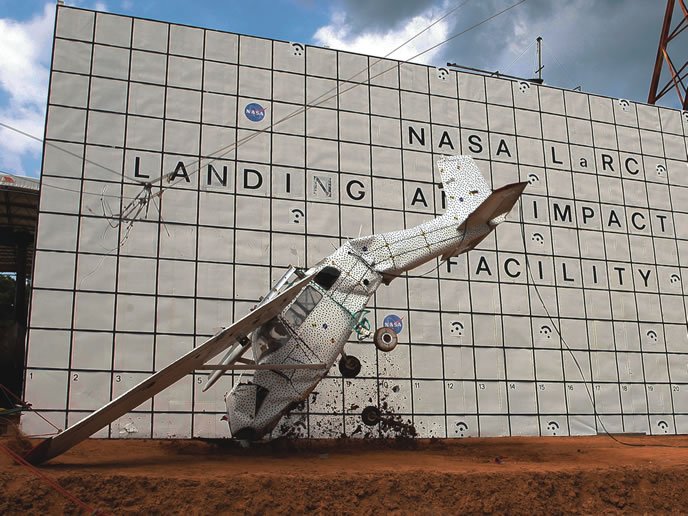In September’s issue, we ran a small article about NASA’s crash-testing of three Cessna 172s as it researches emergency locator transmitter (ELT) technologies and mountings. A sidebar with that article published still images from an in-cabin video of a test, highlighting the value of shoulder harnesses for occupant protection.

Meanwhile, I also have an interest in classic automobiles, and casually keep tabs on what’s on the market from time to time. In checking out such vehicles, I always marvel at how automobile safety has evolved over, say, the last 50 years. A 1965 Ford, for example, is a death trap relative to a 2015 model, thanks to its lack of airbags or seat belts, and a hard-metal dashboard just waiting for someone to hit it.
The same could be said for a 1965 Cessna Centurion, for example, when compared to a 2015 Cirrus SR22. The Cessna also has a hard-metal panel facing the front-seaters, and may not be equipped with shoulder harnesses. It’s not at all likely it has airbags, even though they’re available for retrofit. And two yokes, mounted on steel tubes, emerge from the Cessna’s instrument panel, aimed right at the pilot and passenger.
Being more evolved, the Cirrus avoids much of that. It has shoulder harnesses, and airbags are standard equipment these days. Its instrument panel may still be made of metal, but gone are the chest-spearing yokes on steel tubes, in favor of sidesticks. Each Cirrus also has an airframe parachute designed to lower the airplane and its occupants to the ground in various circumstances. Last time we checked, an airframe parachute isn’t available for the Centurion.
The point of all this is that, despite the huge advances made in the crashworthiness of personal airplanes, they’re still quite problematic when compared to a modern automobile. There are all kinds of reasons for that, of course, not least of which is that many motor vehicle safety technologies simply can’t be applied to aircraft. As one result, the injuries we might suffer in an airplane accident likely are more severe than they would be in a modern car, given the same physics.
The obvious solution is don’t have an airplane accident. Even if that’s easier said than done, there are some things you can do to minimize the risk of injury if something does happen: Secure loose items in the cabin before takeoff. Pay attention to where emergency landing areas are. Consider installing shoulder harnesses and/or airbags. And since the pilot usually has some responsibility for the accident, do what you can to minimize the risk you pose: Fly more often (fuel is almost affordable again!). Get some recurrent training. Add a new certificate, rating or endorsement. Pay attention to weather, and don’t engage in low-level maneuvering. Improve your crashworthiness by minimizing the likelihood of ever testing it.




